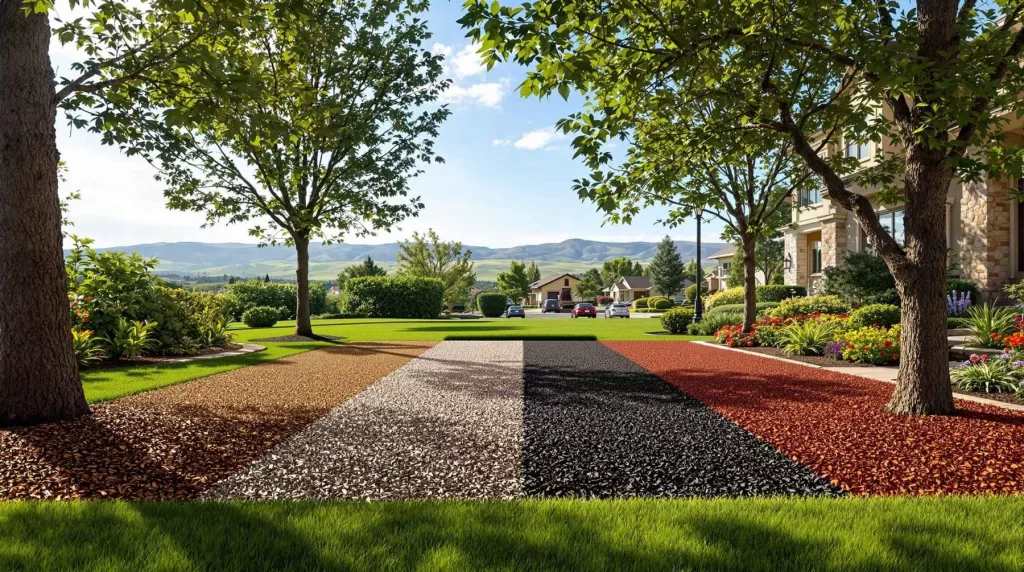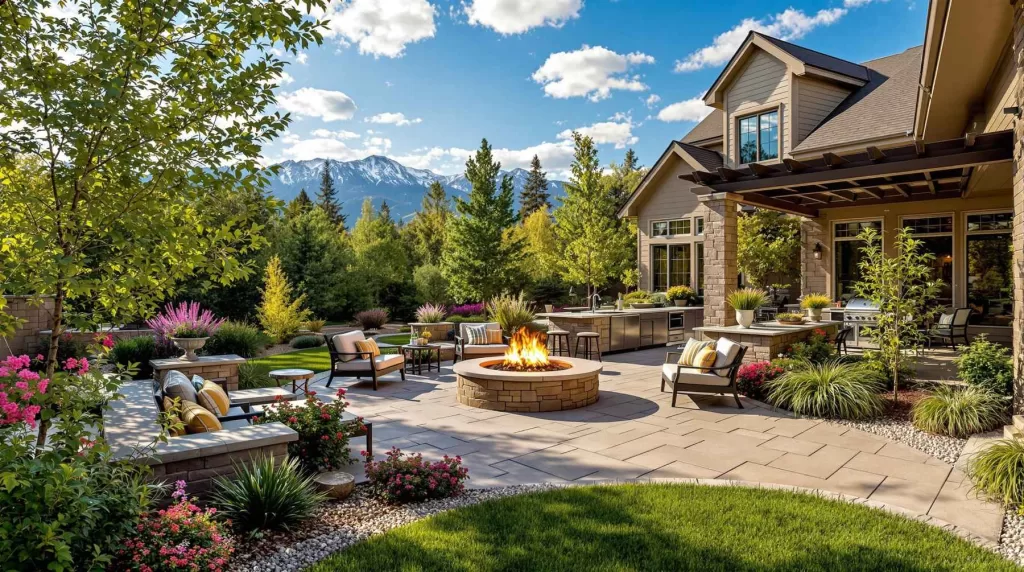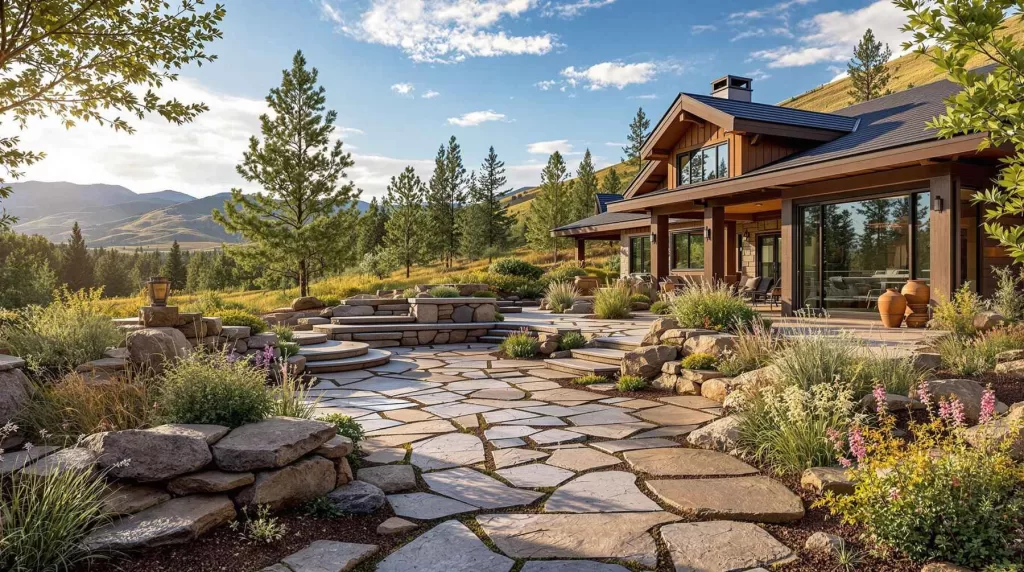Introduction
Xeriscaping has become a popular landscaping approach in Castle Pines, where water conservation is not just a trend — it’s a necessity. With its semi-arid climate, frequent droughts, and HOA guidelines to consider, residents are turning to xeriscape designs to create beautiful, low-maintenance outdoor spaces that thrive with minimal water use.
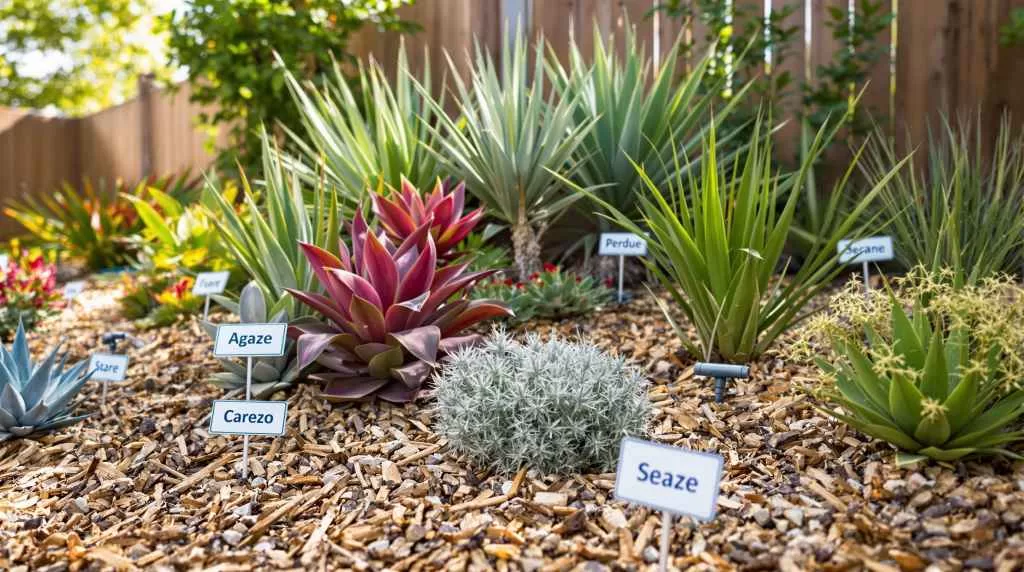
What Is Xeriscaping?
Many homeowners looking into Castle Pines landscaping are exploring xeriscaping as a smart, sustainable alternative to traditional lawn-heavy yards. Xeriscaping isn’t about sacrificing beauty for function — it’s about designing a visually appealing outdoor space that works with Colorado’s natural climate rather than against it.
The Meaning Behind Xeriscaping
The word “xeriscape” comes from the Greek word xeros, meaning dry, combined with landscape. Unlike traditional landscaping, which often relies on water-intensive plants and expansive turf areas, xeriscaping focuses on efficient resource use and drought-tolerant design principles.
Why Xeriscaping Matters in Colorado
Colorado’s water supply is limited, and Castle Pines faces periodic watering restrictions, making xeriscaping a practical solution. By designing with native plants and efficient irrigation, homeowners can conserve water year-round while reducing the need for chemical fertilizers and pesticides.
Environmental and Economic Benefits
Xeriscaping offers a win-win for both the environment and your wallet. It lowers monthly water bills, reduces the need for regular maintenance, and decreases runoff and erosion. Over time, a well-planned xeriscape not only saves money but also increases property value with its curb appeal and eco-conscious design.
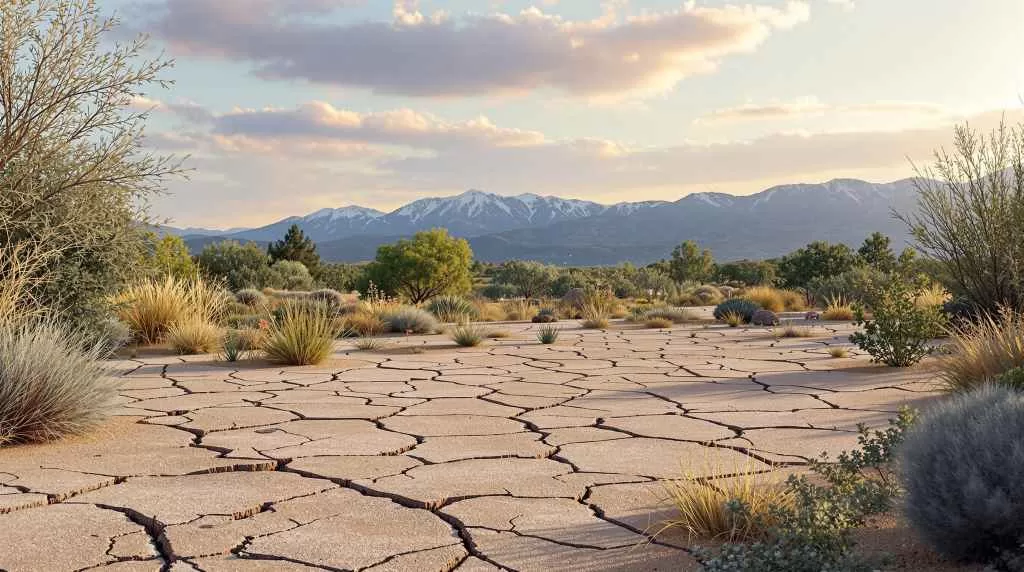
Castle Pines Climate and Soil Considerations
When planning a xeriscape, it’s essential to base your design on local environmental conditions. Tailoring your yard to the semi-arid climate and native soil types allows you to maximize success. For those interested in custom Castle Pines landscaping, these factors play a vital role in both plant selection and long-term performance.
Semi-Arid Climate Challenges
Castle Pines experiences hot, dry summers and occasional drought conditions that place strain on traditional lawns and non-native plants. Xeriscaping helps combat this by focusing on low-water usage and plants adapted to survive long dry periods. Homeowners must also plan for dramatic temperature fluctuations, particularly in spring and fall.
Understanding Castle Pines Soil Types
The region’s soil is typically a mix of clay and decomposed granite, both of which present drainage challenges. Clay retains water but compacts easily, while rocky soils drain quickly but lack nutrients. A well-designed xeriscape often includes soil amendments like compost to balance these extremes and support deep root growth.
HOA Influence on Planting Decisions
Many neighborhoods in Castle Pines operate under HOA guidelines that affect what you can plant and how your yard must look. Fortunately, most HOAs are becoming more xeriscape-friendly when designs are clean and intentional. Working within HOA rules while using drought-tolerant plants and materials ensures your landscape stays both compliant and beautiful.
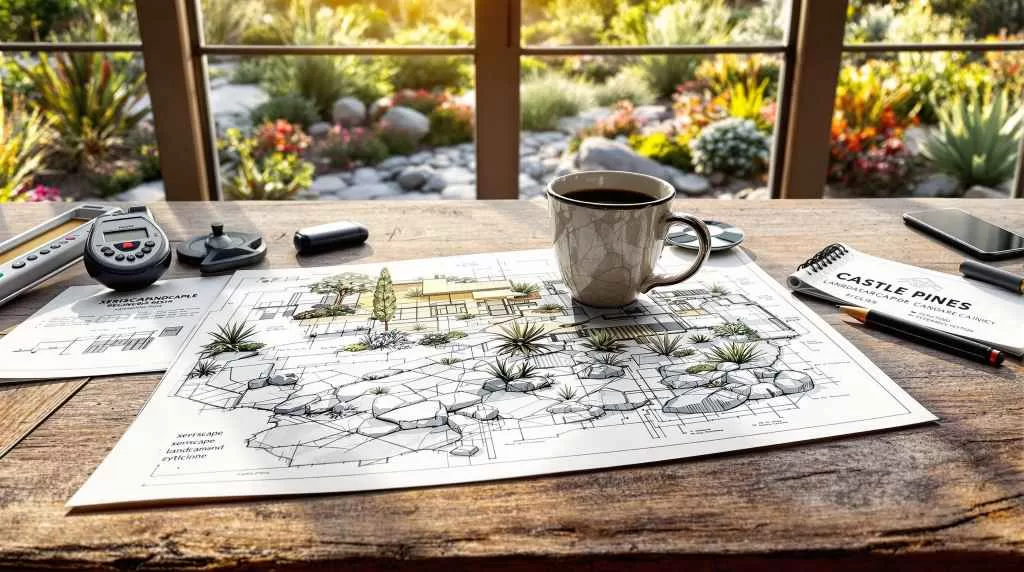
Core Principles of Xeriscaping
Whether you’re refreshing your front yard or reimagining your entire outdoor space, applying the core principles of xeriscaping leads to more efficient and resilient landscapes. Our team’s approach to Castle Pines yard design services is rooted in these seven time-tested strategies.
Planning and Design
Every successful xeriscape starts with a solid plan. Before planting anything, consider sun exposure, slope, and drainage. Mapping out zones based on how each area will be used — and how much water it will need — helps ensure a balanced, functional design that thrives year-round.
Soil Improvement
Healthy soil is the foundation of water-efficient landscaping. In Castle Pines, amending native soil with compost can improve texture and nutrient content, which supports root health and improves water retention. This is especially important in areas with compacted clay or poor drainage.
Efficient Irrigation
Xeriscaping relies on precision watering, not frequent soaking. Drip irrigation systems are ideal for this, delivering moisture directly to the root zones without evaporation loss. Using smart controllers and timers can also automate watering based on weather conditions, saving water and time.
Appropriate Plant Selection
Choosing plants adapted to Colorado’s dry climate is one of the most impactful decisions you can make. Grouping them by water needs — a concept called hydrozoning — simplifies irrigation and maximizes efficiency. Native perennials, ornamental grasses, and heat-tolerant shrubs are all strong contenders.
Mulching for Moisture Retention
A 2–3 inch layer of mulch acts like a natural insulation barrier, reducing surface evaporation, suppressing weeds, and protecting plant roots from extreme temperature swings. Organic mulches like bark chips or shredded wood also improve soil quality over time as they break down.
Limiting Turf Areas
Traditional lawns are among the most water-intensive features in any landscape. Replacing or reducing turf with artificial grass, native groundcovers, or decorative rock not only cuts water usage — it also lowers your maintenance workload. Consider keeping small, functional lawn spaces only where necessary.
Maintenance Best Practices
Even drought-tolerant yards need some attention to stay their best. Occasional weeding, seasonal pruning, and refreshing mulch once or twice a year are simple tasks that maintain both beauty and performance. Compared to traditional landscapes, xeriscapes are far less labor-intensive long term.
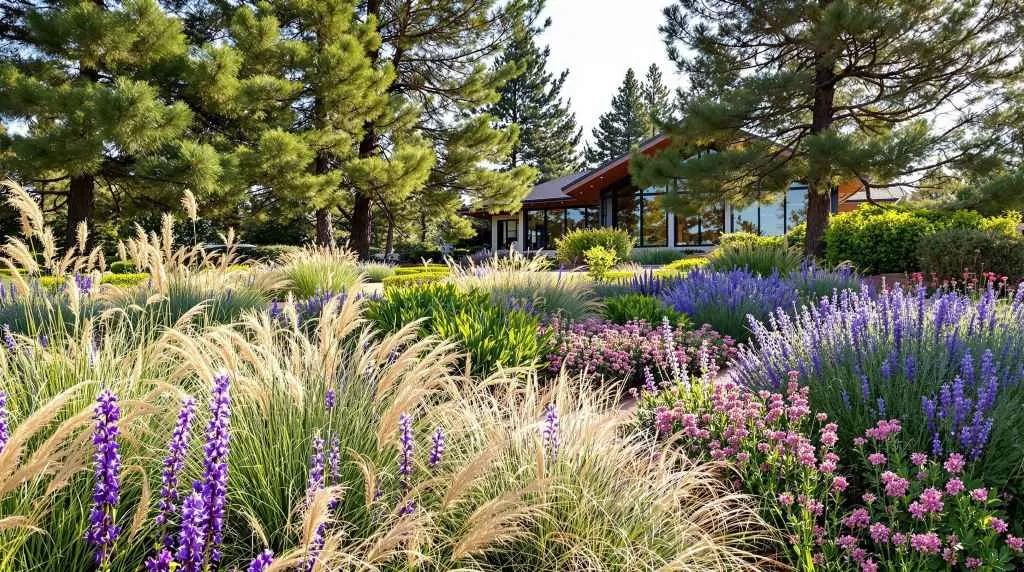
Best Xeriscape Plants for Castle Pines
Selecting the right plants is key to creating a landscape that thrives in Castle Pines’ climate while also boosting value with Castle Pines landscaping that feels intentional and cohesive. The following plants are not only drought-tolerant but also deliver color, texture, and structure to your outdoor space.
Drought-Tolerant Grasses
Native ornamental grasses such as blue grama, buffalo grass, and little bluestem add movement, seasonal color, and structure to xeriscapes. These grasses require minimal watering once established and provide a naturalistic look that blends well with the local environment.
Water-Wise Perennials
Hardy perennials like Russian sage, yarrow, penstemon, and blanket flower provide vibrant blooms without heavy water needs. These plants attract pollinators, resist deer, and flourish with minimal maintenance, making them ideal for both front and backyard designs.
Shrubs and Groundcovers
Low-water shrubs like rabbitbrush, dwarf ninebark, and sumac add height and volume to your design. For groundcover, creeping thyme and ice plant are excellent choices that spread easily and reduce weed growth, all while using very little water.
Trees That Can Handle the Heat
For shade and structure, trees like bur oak, honeylocust, and Kentucky coffeetree are excellent options. These trees are adapted to the region’s dry conditions, require little supplemental irrigation after establishment, and contribute to long-term energy savings by shading your home.
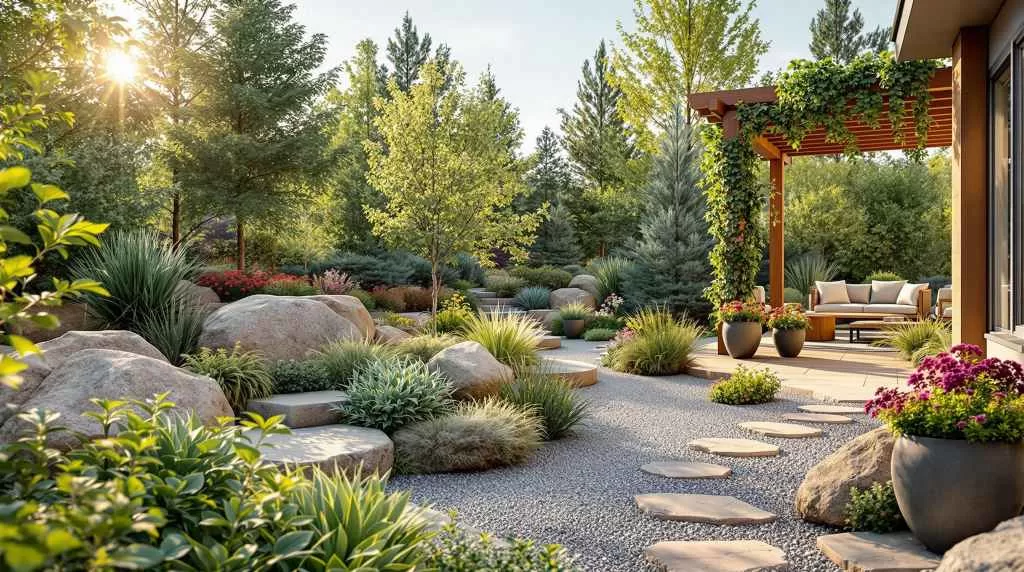
Xeriscaping with Style: Design Ideas
Xeriscaping doesn’t have to look dry or sparse — in fact, some of the most beautiful landscapes in Douglas County follow xeriscape principles. With professional outdoor design in Castle Pines, you can blend modern aesthetics with practical water-saving features.
Layered Planting for Visual Depth
By mixing plants of various heights, textures, and bloom times, you can achieve a lush, layered look that adds visual interest year-round. Position taller plants toward the back and shorter ones up front to create natural depth and structure throughout your landscape.
Rock Gardens and Boulders
Strategically placed boulders and decorative rock groupings create focal points that require zero maintenance. Rock gardens pair perfectly with native plants and offer a sculptural, modern feel while helping with drainage and erosion control on sloped lots.
Pathways and Hardscapes
Incorporating materials like flagstone, crushed gravel, or decomposed granite helps define outdoor spaces and adds character. Pathways invite movement through the landscape while minimizing lawn space and contributing to a polished, cohesive design.
Decorative Mulch and Ground Textures
Varying ground textures — from wood chips to pea gravel — can break up plant zones and add subtle contrast. Using different mulches for different areas also helps visually organize your yard while retaining soil moisture and controlling weed growth.
Container Gardening in Xeriscapes
Containers are a great way to add seasonal color and flexibility to your xeriscape. Use large, weatherproof pots with succulents, trailing vines, or flowering annuals to introduce focal points on patios or near entryways without expanding your irrigation needs.
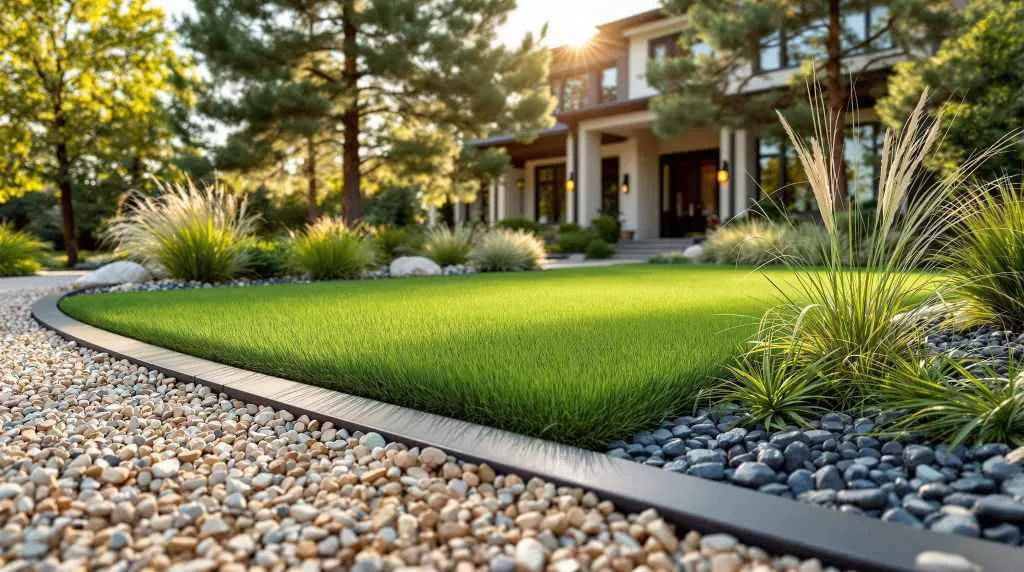
Replacing Turf with Smart Alternatives
Removing traditional lawn areas is one of the quickest ways to reduce water use — and it doesn’t mean sacrificing beauty or function. In fact, many of the best solutions also improve curb appeal in Castle Pines while lowering maintenance and long-term costs.
Artificial Turf Solutions
Modern artificial turf is a far cry from the bright green plastic of years past. Today’s high-end options include multi-tone fibers, realistic textures, and excellent drainage, making them ideal for play areas, pet zones, or accent lawns with no irrigation required.
Native Grass Conversions
For those who prefer a natural look, converting turf to native grasses is a beautiful and eco-conscious solution. Grasses like blue grama or buffalograss need far less water than traditional lawns and create a soft, flowing appearance that blends seamlessly with Colorado landscapes.
Gravel and Decorative Stone Lawns
Replacing grass with gravel, decorative stone, or crushed granite is a clean and contemporary choice. These low-maintenance surfaces can be bordered with steel edging or pavers for structure, and they work well with xeric plantings and built-in seating areas.
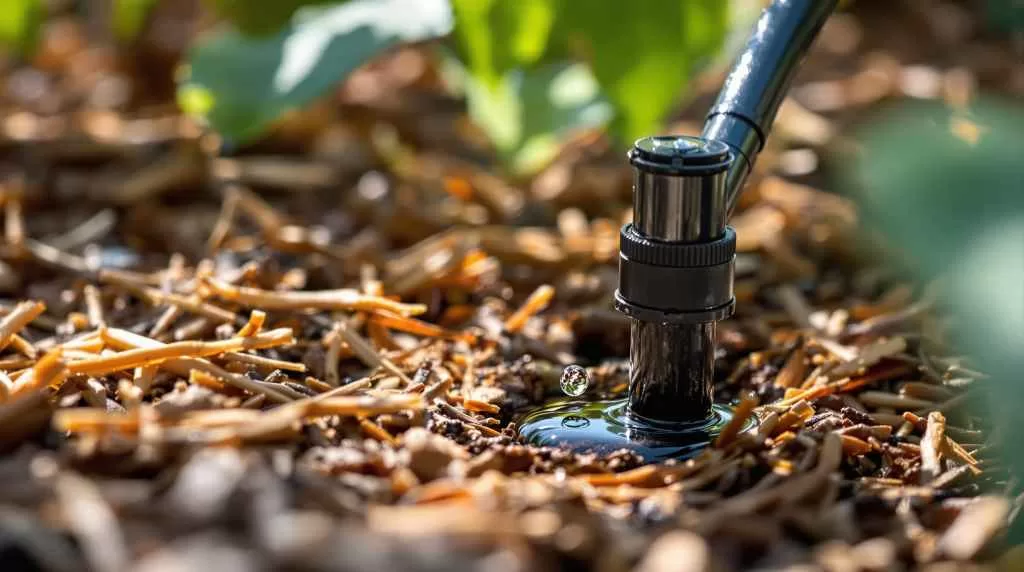
Drip Irrigation Systems and Watering Strategies
Efficient irrigation is the backbone of any xeriscape. By designing your watering system around precision and conservation, you can support plant health while minimizing waste and runoff in Castle Pines’ semi-arid environment.
How Drip Irrigation Works
Drip irrigation uses flexible tubing with emitters that deliver water slowly and directly to plant root zones. This reduces evaporation and overspray, making it far more efficient than traditional sprinklers — especially for flower beds, trees, and shrub groupings.
Rain Sensors and Smart Timers
Upgrading to smart irrigation controllers and weather-based sensors allows your system to automatically adjust watering based on rainfall, humidity, and temperature. These tools help avoid overwatering and ensure your xeriscape stays healthy with as little water as possible.
Zoning for Plant Needs
Hydrozoning is the practice of grouping plants by their water requirements, allowing each irrigation zone to be tailored accordingly. This ensures that low-water plants aren’t overwatered and higher-water zones receive just what they need — no more, no less.
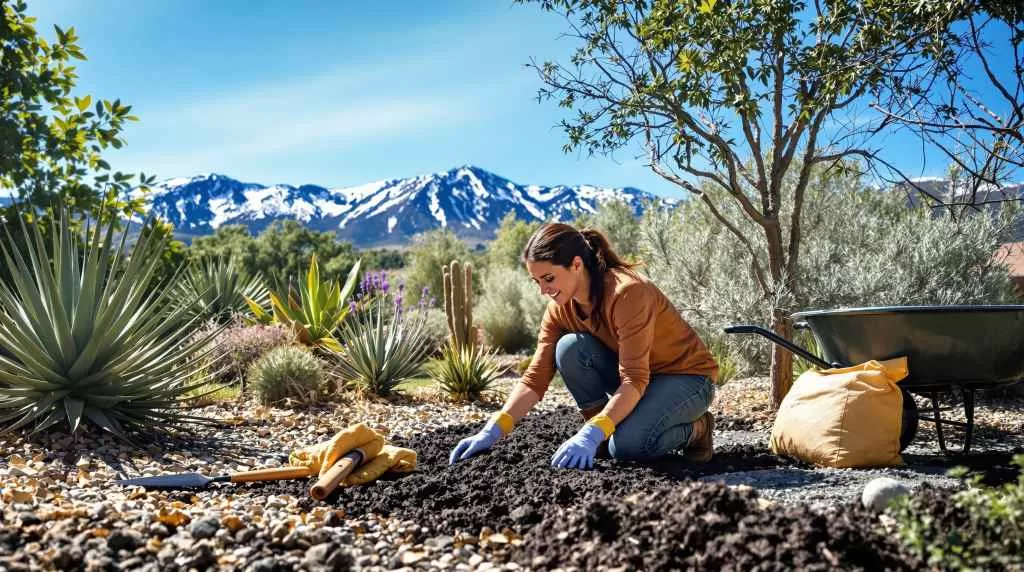
Xeriscaping on a Budget
You don’t need to invest a fortune to enjoy the benefits of xeriscaping. With some planning and creativity, it’s possible to create a stunning, low-water landscape in Castle Pines without breaking the bank — especially if you prioritize effort over expensive materials.
Starting with Small Areas
Begin by xeriscaping a manageable portion of your yard, such as a front entry, side yard, or parkway strip. These spaces offer high visual impact and allow you to gain confidence before committing to a full yard transformation.
DIY Mulching and Soil Prep
One of the most budget-friendly strategies is to do your own soil amendment and mulching. Spreading compost and mulch by hand may take time, but it saves labor costs and improves water retention and plant health in the long run.
Using Free or Reclaimed Materials
Look for repurposed stones, bricks, or leftover mulch from local landscaping supply yards or community give-away groups. Many homeowners also reuse edging, pots, and gravel from previous projects to cut down on material expenses.
Gradual Turf Removal
If your yard is turf-heavy, consider removing the grass in phases. This approach gives you time to plan each new zone and reduces upfront costs. Sheet mulching, solarization, or renting a sod cutter are all cost-effective options to replace lawn with drought-tolerant alternatives.
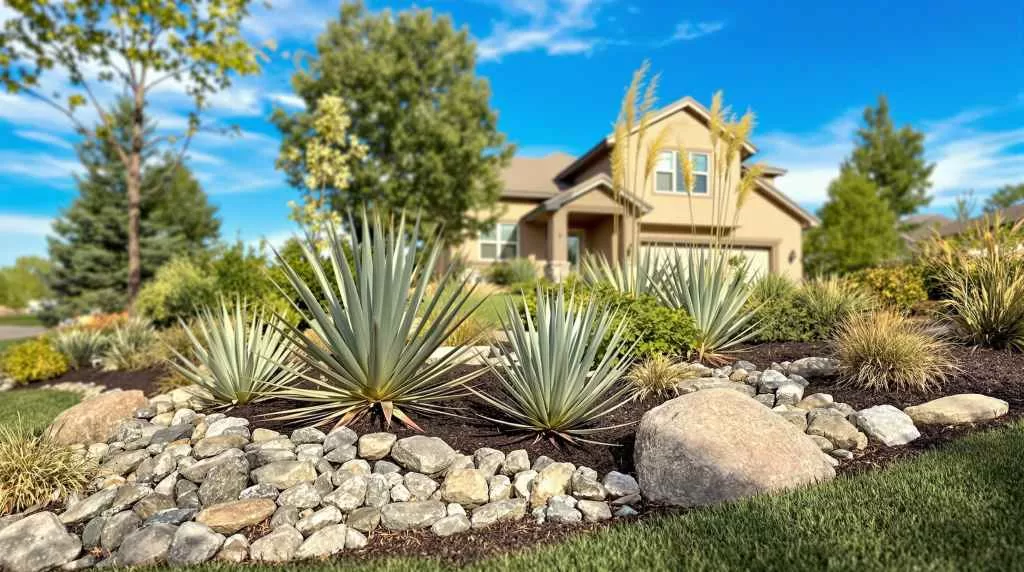
HOA Compliance and Xeriscaping
Living in an HOA-regulated neighborhood in Castle Pines means your xeriscaping plans must meet certain guidelines — but that doesn’t mean you have to sacrifice creativity or drought efficiency. With a thoughtful approach, you can create a xeriscape that’s both visually stunning and fully compliant.
Understanding HOA Design Guidelines
Start by reviewing your HOA’s current landscaping rules, which often outline approved plant lists, front yard coverage ratios, and ground cover requirements. Understanding these expectations early helps avoid costly revisions later in the process.
Pre-Approval Processes and Submissions
Most HOAs require submitting a landscape design plan, plant list, and materials palette before beginning work. Make sure your submittal clearly communicates your intent to create a neat, well-maintained xeriscape that aligns with the community aesthetic.
Appealing HOA Denials
If your initial plan is rejected, don’t panic — many HOAs are open to revisions. Respond respectfully with detailed explanations, photos of similar approved designs, or alternate plant selections that achieve the same water-saving goals while satisfying the board’s concerns.
Xeriscape Designs That Win HOA Approval
The most successful HOA-approved xeriscapes often feature a mix of neatly spaced drought-tolerant plants, decorative gravel, and clean hardscape borders. Avoid designs that look barren or weedy, and prioritize visual balance, defined edges, and seasonal interest to demonstrate long-term curb appeal.

Maintenance Tips for Long-Term Success
Xeriscaping may be low-maintenance, but it’s not zero-maintenance. With a few seasonal habits, you can keep your landscape looking polished, healthy, and water-efficient — all while protecting your investment over the long term.
Seasonal Pruning and Trimming
Many xeric plants benefit from light pruning in late winter or early spring to encourage fresh growth. Keeping shrubs, grasses, and perennials well-shaped improves both plant health and the overall appearance of your yard.
Weed Management Without Chemicals
Weeds can still find their way into mulched or gravel areas, especially during the first year. Stay ahead with occasional hand-pulling or spot treatments, and consider laying down landscape fabric or cardboard layers under mulch to block regrowth.
Refreshing Mulch and Ground Cover
Over time, organic mulch breaks down and becomes less effective. Plan to replenish mulch every 12–18 months, especially in high-traffic areas or spots where wind or water may cause displacement.
Adjusting Irrigation Over Time
As your plants mature, they’ll require less frequent watering, especially during cooler months. Adjust your drip system annually to reflect new plant sizes, root zones, and any changes in seasonal rainfall. Regularly inspect emitters for clogs or leaks.
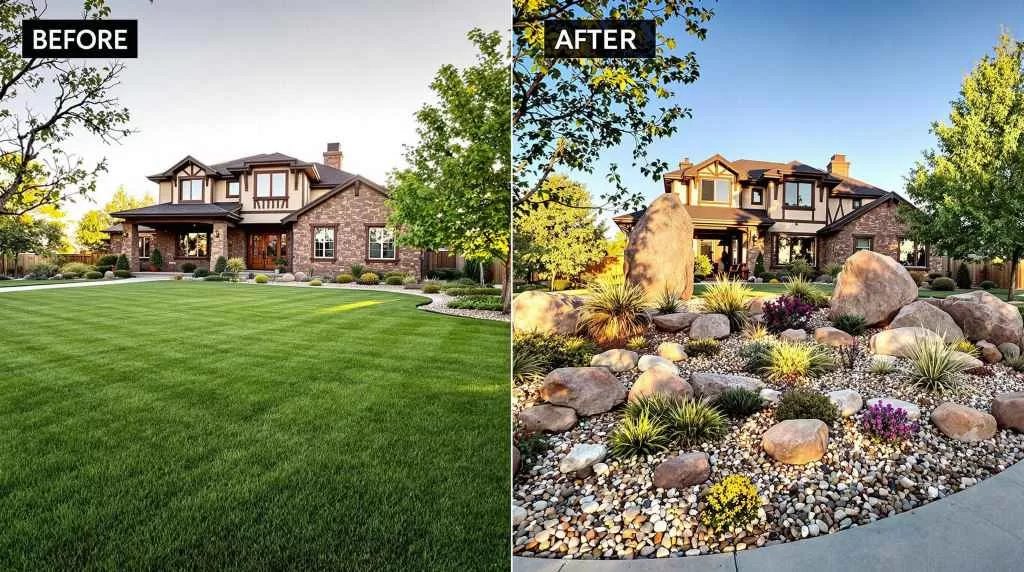
Real-Life Xeriscaping Projects in Castle Pines
Seeing xeriscaping in action can help you envision what’s possible in your own yard. These real-life projects in Castle Pines highlight how thoughtful xeriscape design can be both HOA-compliant and visually impressive, while drastically reducing water use.
Before-and-After Transformations
One of the most dramatic changes comes from replacing high-maintenance lawns with gravel beds, native grasses, and stone features. These projects often start with removing turf and end with a stunning, layered design that completely transforms the home’s exterior feel.
HOA-Approved Front Yard Designs
We’ve completed numerous xeriscapes that fully align with HOA regulations in Castle Pines. These designs feature neatly arranged plant groupings, uniform gravel ground cover, and clean edge lines, helping homeowners gain fast approval while upgrading their curb appeal.
Backyard Living Spaces
Xeriscaping is just as impactful in the backyard. Many clients integrate flagstone patios, dry creek beds, and fire pit areas surrounded by drought-tolerant planting zones. These spaces are perfect for entertaining, relaxing, or simply enjoying a water-wise outdoor lifestyle.

Partnering with a Local Xeriscape Expert
Working with a professional who understands the Castle Pines climate, soil, and HOA landscape rules ensures your xeriscaping project is both functional and beautiful. A local expert brings experience, efficiency, and confidence to every step of the process.
Understanding Local Codes and Climate
A local xeriscape specialist is well-versed in Castle Pines-specific regulations, water restrictions, and microclimates. This knowledge helps you avoid costly mistakes and ensures your landscape plan is fully optimized for long-term success.
Custom Design vs. Template Packages
While DIY kits and templated plans may seem convenient, they often lack the flexibility needed to address unique property layouts, soil types, and HOA requirements. A custom design ensures that every element — from grading to plant placement — is tailored to your home.
Project Management and Installation
From the initial design through final inspection, a professional team can handle material sourcing, installation, HOA submissions, and irrigation setup. This full-service approach saves time, reduces stress, and ensures your xeriscape is installed correctly the first time.
Ready to Transform Your Outdoor Space?
If you’re ready to upgrade your yard with a water-efficient design that’s both HOA-compliant and visually stunning, our team is here to help. At Custom Landscapes by Design, we specialize in xeriscaping for homeowners in Castle Pines, Castle Rock, Parker, and surrounding areas. Whether you’re looking to reduce maintenance, save on water bills, or simply create a space that reflects Colorado’s natural beauty, we’ll guide you from concept to completion. Let us bring your vision to life with expert craftsmanship and custom landscape solutions tailored to your property — schedule your consultation today.

